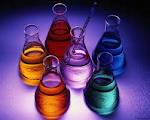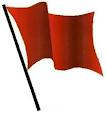Okay, I’ll admit that only recently I have started reading food labels. To be honest, I just don’t have the time to read labels while shopping because I’m rushing. Frankly, the people cluttering the aisles reading ingredients just annoy me. It’s not worse than the texting driver holding up traffic to complete the text. I have learned that labels can be deceiving. Here are a few of the stealth Gluten Red Flags to watch!
Gluten Free does not always mean gluten free. Definitely avoid wheat, wheat gluten, barley, and rye. However, malt or hydrolyzed vegetable protein are also enemies! Be especially careful of cereals, pastas, cakes and cookies. You can substitute with rice or potato flour. Substitute rice noodles for traditional pasta.
“Food Allergy and Food Intolerance” by Dr Jon Brostoff is an excellent resource in understanding food intolerance symptoms and has a large index of buzz words to watch for when reading labels.
Dee had a similar experience yesterday:
Sorry to pick on a brand name, but this is such a perfect example of why we need to read labels. I bought some things for a health fair at my work, and smoothies in a bottle were specifically requested. So I loaded my shopping cart with apples, bananas and Frusion. The first thing that caught my eye was 4% juice. As I was unpacking groceries, I decided to try one. Quickly glanced at the label without my reading glasses and saw 180 calories. My non-dairy coconut and almond milks are about 100 so when you add fruit I thought that sounded normal. Just now, I put on the glasses to see that — sure enough — high fructose corn syrup is item number four on the label, after yogurt, water and sugar. There are 33 grams of sugar. For comparison, Kool-Aid (pure liquid poison) has only 25. Fresh fruit is loaded with fiber but the drink has none. Here is a better smoothie option: 8 oz. rice milk (120 calories + 11 grams sugar) and 1 cup strawberries (65 calories and 12 grams sugar) plus 4 oz. Greek yogurt (65 calories + 4 grams sugar). Even though the calories are higher, the sugar is much lower and it doesn’t contain high fructose corn syrup. It also has some great protein from the milk and yogurt and complex carbs from the fresh fruit. One real smoothie starts the day off right, no hunger until lunch. Even though processes and packaged foods are convenient, you always are better off with whole foods in their natural form. Remember that one very helpful website to use for learning about the nutritional benefits of most foods is www.calorie-count.com.






